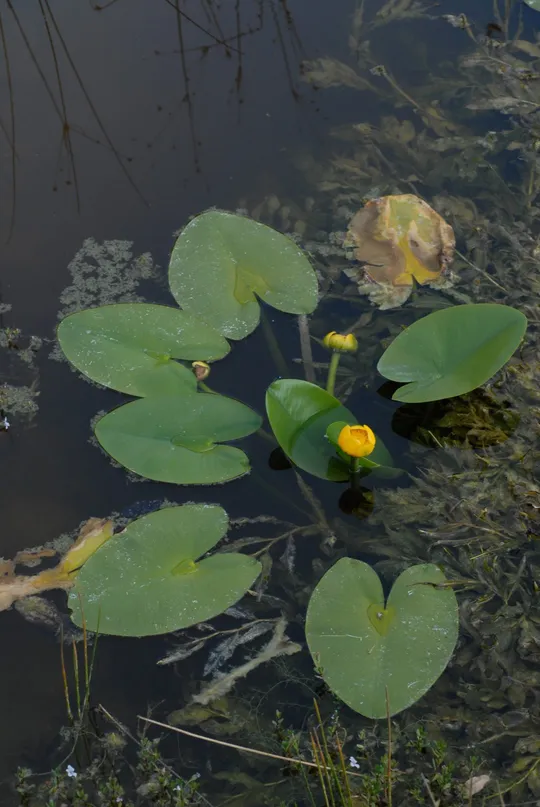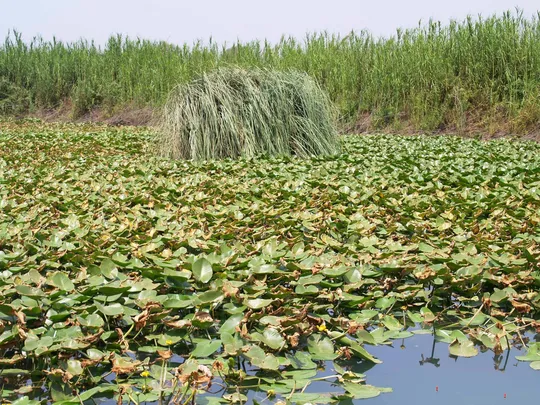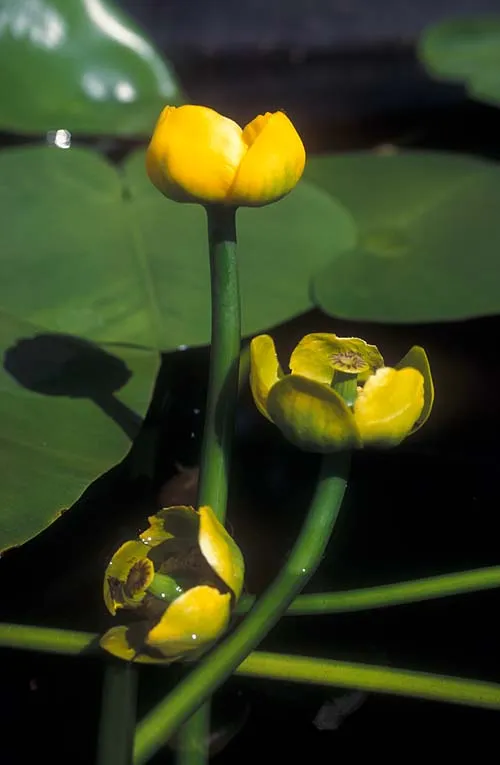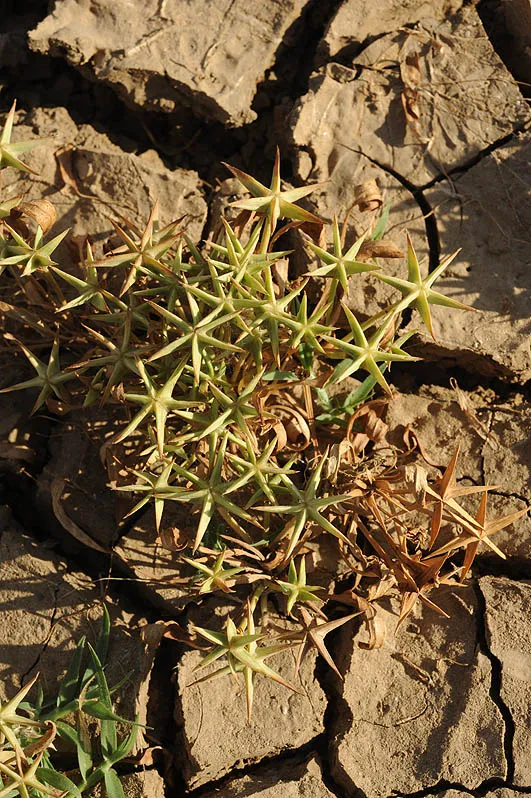European Yellow Pond-lily, Yellow Pond-lily
Nuphar lutea



The raw or cooked
rhizome of Nuphar lutea was used as a source of starch in times of
famine. The leaves and fruits are used as food for fish and poultry. N.
lutea plants contain tannins and gallic acid and were used to cure skin
diseases and for dyeing.
Nuphar lutea now grows in the
Hula Valley, on the Carmel Coast and in the Sharon, at nine documented sites,
but it is estimated to grow at 15 sites. In the Hula Valley it is found in the
Hula Nature Reserve and in the lake, at En Te'o and
Enot Enan; on
the Carmel Coast in the Dalia and Taninim streams and in the Sharon at the Yarkon
sources and in the upper section of the Yarkon (where relatively good quality
water flows). Until the mid-1950s, before the waters of the Yarkon were
diverted to the Negev, many populations grew along the river (Avitzur, 1957),
including the section between Seven Mills and the sea. In the past (1924) it
was collected at En Harod in the eastern Jezreel Valley, but has become extinct
there.
N. lutea is noted in the Flora Palaestina from
the Upper Galilee and the coast of Pleshet as well, but there is no documentation
to support this from the herbarium or other sources.
Ponds, lakes,
rivers and streams, in clean, stagnant or slowly flowing water.
The genus Nuphar has 20 species that grow in
temperate and cool regions north of the tropics. This genus is one of eight genera in the
Nymphaeaceae family, a cosmopolitan family of aquatic and marsh plants that
have rhizomes and floating leaves. The second genus in Israel is Nymphaea
(two species see below), that has a partial inferior ovary in contrast to the
superior ovary found in Nuphar.
·
The number of regions in which Nuphar lutea is found has decreased
from four to three. The total number of sites is constantly declining since the
mid-20th century: in the Hula Valley, the lake populations have disappeared, except
for those surviving in the reserve. In the Yarkon the downstream populations
have disappeared. On the Carmel Coast, the site located in the Kebara Marsh has
disappeared.
·
N. lutea populations occur in nature as
individual plants or as dense breeding colonies formed by vegetative
reproduction from rhizomes. They cover the surface of the water over expanses
of tens to hundreds
of square meters.
·
The drainage of the Hula Lake and the
diversion the Yarkon water to the National Water Carrier are the main reason
for the great decrease in the number of sites where N. lutea grows. The main threats today are desiccation
and deterioration of water quality. It also suffers from nutrias, which multiply
rapidly in wetlands.
·
N. lutea is protected by law in Israel and the
populations in the Hula Reserve, the Timsah Pond Reserve and in the Yarkon Sources
National Park are protected.
·
It is not endangered in European and
Northern Mediterranean countries, where it is extremely common in wetlands, and
it is not classified as an endangered species by the IUCN. It is in danger of
extinction in in Algeria, which is the southernmost limit of its distribution.
In a number of states in the U.S., it was assessed as being endangered.
Water quality
should be preserved at sites where Nuphar lutea grows: salinization and pollution
resulting from over-pumping and leaching of fertilizers and pesticides should
be prevented. The nutria populations should be controlled and prevented from
accessing N. lutea stands. The species is
recommended for rehabilitating wetlands and in park landscaping.
Nuphar lutea is found in all
European countries, including the northern Mediterranean countries. It does not
appear in the Balearic Islands, in Corsica and in Crete. In North Africa, it was
recorded at only two sites in northeastern Algeria. It is also found as an
invading plant in North America – in the United States and Canada.
Nuphar lutea is a perennial
aquatic plant with erect floating leaves, which grows in streams and wetlands
in the Hula Valley, Carmel Coast, and the Sharon. The number of regions and
sites in which it is found is declining. N. lutea is endangered because of its rarity, the
vulnerability of its habitat and its attractiveness. It is not threatened in most
of the countries in its global range.
אביצור, ש. 1957. הירקון – הנהר וגלילותיו. הוצאת הקיבוץ המאוחד
ויזל, י. וליפשיץ, נ. 1979. צמחי מים בישראל. הוצאת רשות שמורות הטבע
Current Occupancy Map
| 1000 squre meter pixel | 5000 squre meter pixel | 10000 squre meter pixel | |
|---|---|---|---|
| number of observations | 0 | 0 | 0 |
| in total pixels | 0 | 0 | 0 |
| Family | Nymphaeaceae |
| Classification | On the endangered species list |
| Ecosystem | Mediterranean humid |
| Chorotype | Euro – Siberian – Mediterranean – Irano-Turanian |
| Conservation Site | Yarkon Sources, Hula Nature Reserve |
| Rarity |
1
2
6
|
|---|---|
| Vulnerability |
0
3
4
|
| Attractiveness |
0
3
4
|
| Endemism |
0
0
4
|
| Red number |
1
5.3
10
|
| Peripherality | N |
| IUCN category | DD EW EX LC CR EN VU NT |
| Threat Definition according to the red book | Critically endangered |
 Based on:
Based on:






